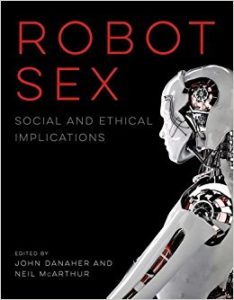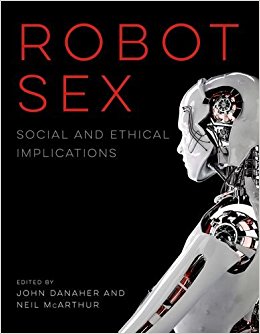My research tells me that mankind has used sex toys for religious or personal use for over 30 thousand years. Records show that even the ancient Greeks used dildos and other phallic objects for symbolic and sexual reasons. But over time we’ve moved from sex toys to robots that look uncannily human.


I began my investigation by attending a talk with two professors who spoke about the sex doll industry and its future. Dr. Kate Devlin interviewed Dr. John Danaher about his book Robot Sex to discuss the issues raised in it and his thoughts about robot-human interaction. Although some might say that this subject is too trivial to be worthy of academic research, Dr. Devlin and the team at Virtual Futures believe the book contributes to a “… thorough debate on the social and ethical implications of sex with robots.”

Dr Danaher, who co-wrote the book with Neil Mcarthur in November 2017, has studied this topic for a number of years, and spoke about the positive and negative aspects of robotics. Both Danaher and Mcarthur were mostly positive about robot sex, which puts them at odds with many academics, authors and activists.
The book attempts to answer some of the many ethical questions people have in regards to this niche interest, such as: “Can a person love a sex doll?” and “Can a person lose their virginity to a sex doll?” To help this debate along, Dr. Danaher offered the audience a quote from the comedian Richard Henry: “Having sex with a robot is just like having an elaborate wank”. Danaher argued that though science would define these robots as just that, robots, people’s emotions mean that they look past the scientific, and that is why they can turn to these machines for companionship as well as sex.
As the next stage of my research I decided to watch the documentary “Love Me, Love My Doll’ with my mother. The documentary was released in the UK in 2007 and features some men who have fallen in love with their synthetic dolls and others who just use the dolls for sex. One thing that surprised my mother and I was the care and attention some of these men put into making up and dressing their dolls. But there were also many creepy moments in which we felt that they took things a little too far.
The question still remains: Will relationships between humans and robots or dolls ever be seen as normal? Because only if they do will the industry really take off. And until then these creatures will always be sold “under the counter” instead of over it. But in the meantime the manufacturers will continue to try and make them look more and more human. The most human-like doll made so far is by Abyss Creations and is called Harmony.

She has an animatronic head and an AI personality. But judging by this picture I think there is still a long way to go.




